Monday, September 8, 2008
Friday, July 18, 2008
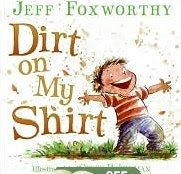 Foxworthy, Jeff, (2008), Dirt on my shirt. New York: HarperCollins. (Illus. by Steve Bjorkman). Grades K-2. Poetry.
Foxworthy, Jeff, (2008), Dirt on my shirt. New York: HarperCollins. (Illus. by Steve Bjorkman). Grades K-2. Poetry.Let's fact it: kids will like this book of poetry because it sounds a lot like a Foxworthy TV special. Following in a Ken Nesbitt-like fashion, these poems will appeal to young readers. Keep it displayed on your poetry shelf.
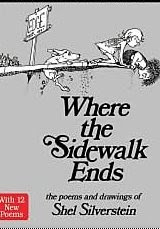 Silverstein, Shel, (2004), Where the sidewalk ends: 30th Anniversary special edition. New York: HarperCollins. Ages 9-12. Poetry.
Silverstein, Shel, (2004), Where the sidewalk ends: 30th Anniversary special edition. New York: HarperCollins. Ages 9-12. Poetry.You will have to beg your students to put this book down. Full of fun and witty poems, even your challenged readers will claim this book as their own. Use this book to hook reluctant readers and keep Silverstein's other books close by.
 Scieszka, J, (1996), True story of the 3 little pigs. New York: Penguin Group. Grades 3 and older. Fiction.
Scieszka, J, (1996), True story of the 3 little pigs. New York: Penguin Group. Grades 3 and older. Fiction.An up-to-date version of a well know fable, this story allows the big bad wolf, Al to tell his side of the story. Of course, he is finally arrested for his misdeeds and sent to the Pig Pen. Be sure to tell your students not to believe everything they read in the newspaper!
 Botermans, J., Tichler, H., (2005), The big brain workout. New York: Sterling Publishers. Non-fiction.
Botermans, J., Tichler, H., (2005), The big brain workout. New York: Sterling Publishers. Non-fiction.Need a book that will hold your student's interest during free time? This book will have students using brain power to answer the questions and solve the puzzles. Good for older children through adults.
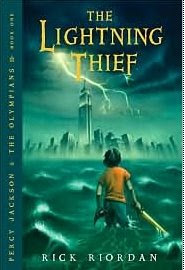 Riordan, R., (2006), The lightning thief. New York: Hyperion/Miramax. Grades 5-9. Fiction.
Riordan, R., (2006), The lightning thief. New York: Hyperion/Miramax. Grades 5-9. Fiction.Students interested in Greek mythology will enjoy this book's mythological characters. The setting, based at a summer camp, does not hold the usual camp activities. Follow Percy on his journey to find the lightning bolt stolen from Zeus and his true self.

Bloor, E., (2006), Tangerine. New York: Harcourt. Age 10. Realistic fiction.
Despite being legally blind, Paul competes against his brother is this book about soccer, blindness, and self-acceptance. An excellent choice as a literature circle selection and a topic that will interest hard to please boys. This is Bloor's first book, look for more to add to your library.
 Thomson, S. L., (2006), Amazing snakes. New York: HarperCollins. Grades 1-3. Non-Fiction.
Thomson, S. L., (2006), Amazing snakes. New York: HarperCollins. Grades 1-3. Non-Fiction.Discover everything you ever wanted to know about snakes in this informative book with interesting photos. A great selection for your classroom library or as a supplement to your science unit. Students are sure to share this books with friends!
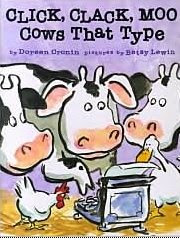 Cronin, D. (2000), Click, clack, moo: Cows that type. New York: Simon & Schuster. ages 5-8. Fiction.
Cronin, D. (2000), Click, clack, moo: Cows that type. New York: Simon & Schuster. ages 5-8. Fiction.What child would not enjoy cows that can type? Primary teachers will use this book as an example of how to work and play well with one another. Intermediate teachers might also read this to introduce the concept of "protest" in social studies.
Wednesday, July 16, 2008
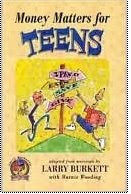 Burkett, L. , Wooding, M., ( 2001). Money matters for teens. New York: Moody Publishers. Middle school. Non-fiction.
Burkett, L. , Wooding, M., ( 2001). Money matters for teens. New York: Moody Publishers. Middle school. Non-fiction.Jut the book to read while teaching students how to manage checking accounts. In today's economy this is a book that matters and will have parents asking to check it out. This gives another selection that joins the teaching of math with language arts.
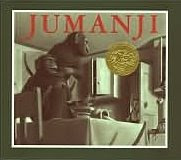
Van Allsburg, C. (1981). Jumanji. New York: Houghton Mifflin. Ages 5-8. Fiction.
Two children find themselves pulled into the the board game they are playing. To end the game and the chaos, they must roll a 12. A delightful story, beautifully illustrated in black and white by Van Allsburg. This books can also be used as a lead into the concept of probability.
Caldecott Winner
Audio version read by Robin Williams available
DVD/Sony
 Young, E. (1996). Lon Po Po: A Red-Riding Hood story from China. New York: Penquin Group. Grades 1-5. Fiction.
Young, E. (1996). Lon Po Po: A Red-Riding Hood story from China. New York: Penquin Group. Grades 1-5. Fiction.Based on the story of Little Red Riding Hood, this version is sure to please your students as they compare and contrast stories. Beautifully illustrated with rich colors and panels, that will stimulate conversation. After reading this, your class will want to compose their own class version of this well known tale.
Tuesday, July 15, 2008
 Bentley, D., (2008). Ten rubber duckies: A wacky quacky counting adventure. New York: Random House. Ages 5-7, Fiction.
Bentley, D., (2008). Ten rubber duckies: A wacky quacky counting adventure. New York: Random House. Ages 5-7, Fiction.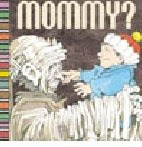
Sendak, M., ( 2006). Mommy?, New York: Scholastic Inc. Ages 4-8. Fiction.
3-D creatures are found inside this book by Maurice Sendak. Words are not needed to tell the story of boy meets monsters. Is he really looking for his mummy? A great story around Halloween for students to look at again and again.
 Harris. R. H., (2004). Don't forget to come back. New York: Candlewick Press. (illus. by Harry Bliss). Grades pre-school -2. Fiction.
Harris. R. H., (2004). Don't forget to come back. New York: Candlewick Press. (illus. by Harry Bliss). Grades pre-school -2. Fiction.Full of threats for her parents, little Sugar just wants her parents to stay at home with her. Thank goodness the babysitter saves the night! Just the right book to read to young children experiencing the same emotions as Sugar.
Found online at Tumblebooks, link is right side of Blog
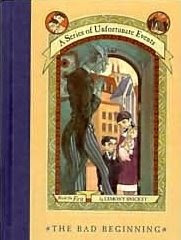 Snicket, L., (1999). The bad beginning: Book the first. New York: Harper Collins. Grades 4-6. Fiction.
Snicket, L., (1999). The bad beginning: Book the first. New York: Harper Collins. Grades 4-6. Fiction.The first book in the collection, A Series of Unfortunate Events, this book introduces readers about the Baudelaire children who go to live with a relative who has his eyes on their fortune. Students will enjoy the "unfortunate events" that unravel in this engaging book.
Audio version read by Tim Curry

Erickson, J.R. , (2007). The case of the booby trapped pickup. New York: Penquin Group. Grades 3-6 . Fiction.
If you have not read any of the Hank the Cowdog series, this will be a treat!
Hank and his friends are always in trouble and your students will laugh out loud and beg you to keep reading as the trouble unfolds.
Available on audio tape, read by John Erickson.
 Speare, E. G., (1984). The sign of the beaver. New York: Random House.
Speare, E. G., (1984). The sign of the beaver. New York: Random House.Grades 5-8. Historical Fiction.
Newbery Honor Award
Available on CD/ Random House Audio

Kinney, J. (2007). Diary of a whimpy kid. New York: Amulet Books. Grades 3-6. Fiction.
Started as a comic (be sure to visit Funbrain.com) to see where this all started.
Students will empathize with Greg as he is forced to record his deepest thoughts in a diary. Pranks and angst abound in this book about the life of a middle school boy. Boys will identify with Gregg's problems.
Available on CD/ Recorded Books, LLC.
Monday, July 14, 2008
 Sabuda, R. (2004). America the beautiful: A pop-up book. New York: Simon & Schuster. (Illus. by Robert Sabuda). Grades K-6. Pop-up book.
Sabuda, R. (2004). America the beautiful: A pop-up book. New York: Simon & Schuster. (Illus. by Robert Sabuda). Grades K-6. Pop-up book.The wonders of America are presented pop-up style in this one of a kind book. Use the pop-ups to show students what our national treasures look like up close. You will want to keep this book on your shelf.

Schmidt, G.D. (1994). Poetry for young people: Robert Frost. New York: Sterling Press. Grade 3 and older. Poetry.
A good choice to put on the shelf during a poetry, season, or weather unit. These beautiful illustrations and the nature poetry of Robert Frost fuse together in this selection for younger readers. Students will encourage their teachers to read and model from this collection often.
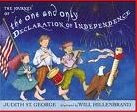
St. George, J. (2005). The journey of the one and only Declaration of
The Journey of the One and Only Declaration of Independence tells the story of how the Declaration of Independence traveled to each colony for ratification and was preserved from natural and man-made threats throughout history. A good choice to use when discussing primary source documents with your students.
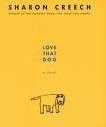
Creech, S. (2003). Love that dog. New York: HarperCollins. Grades 4-8. Poetry.
Jack is told he must write poetry and does not want anyone to see what he has written. When Jack begins a correspondence with a noted author, he discovers the path to maturity and a love of poetry. Your students will make multiple connections with a book that brings their feelings right out in the open.
Highly recommended for intermediate grades.
 Coville, B. (1992) My teacher glows in the dark. New York: Simon & Schuster. (Illus. by John Pierard). Grades 4 -6. Science fiction.
Coville, B. (1992) My teacher glows in the dark. New York: Simon & Schuster. (Illus. by John Pierard). Grades 4 -6. Science fiction.Peter is suddenly whisked away from earth and finds himself in a position to save the earth. Full of the machinery and gadgets that make science fiction so appealing to boys.
Eleanor Cameron Award (Golden Duck for middle grades science fiction)

Clement, A. (2020). Things not seen. New York: Penquin Young Readers Group. Grades 6 and older. Science fiction.
This book about self-acceptance revolves around Bobby who has suddenly become invisible, just like he used to feel around his family and classmates. A chance encounter with a blind student gives Bobby a friend who helps him work through his problems. Recommend this book to the many students feeling out of place in middle school.
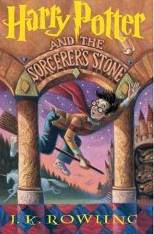 Rowling, J.K. (1998). Harry Potter and the sorcerer's stone. New York: Scholastic Press. (Illus. by Mary GrandPre). Ages 8-12. Modern Fantasy.
Rowling, J.K. (1998). Harry Potter and the sorcerer's stone. New York: Scholastic Press. (Illus. by Mary GrandPre). Ages 8-12. Modern Fantasy.Harry Potter requires students to follow along with the story and learn a new vocabulary! In this good versus evil novel, follow Harry as he enters school at Hogwarts, an institution which teaches witchcraft. He soon discovers more about his deceased parents and the powers that he has inherited. Not for everyone, some controversy surrounds the content of this book.
DVD available/Warner Home Video (2001) PG rating
British National Book Award for Children.
 Lewis, C.S., (1994). The lion, the witch, and the wardrobe. New York: HarperCollins. (Illustrated by Pauline Bayens). Ages 9-12 . Modern Fantasy.
Lewis, C.S., (1994). The lion, the witch, and the wardrobe. New York: HarperCollins. (Illustrated by Pauline Bayens). Ages 9-12 . Modern Fantasy.Who wouldn't want to jump into another world by climbing into a wardrobe?
Narnia, the world inside the wardrobe, introduces young readers to schoolchildren sent to the country to escape the war, the White Witch, talking beavers, and a lion named Aslan. The second in the series, The Chronicles of Narnia, this book captures the imagination of your students as good and evil collide.

Steptoe, J. (1987). Mufaro's beautiful daughters: An African tale. New York: Lee & Shepard. (Illus. by John Steptoe). Grades pre-school - 3. Traditional Literature.
An African version of the Cinderella tale, complete with a King seeking a wife, self-centered sisters, and a snake. This book is another addition to your Cinderella library and is sure to inspire comparisons of other Cinderella stories.
Caldecott Honor Book Coretta Scott King Award

Martin, R. (1992). The rough-faced girl. New York: G.P. Putnam and Sons. (Illus. by David Shannon). Grades 3 and older. Traditional literature.
Students will connect with this native American version of the Cinderella tale from the Algonquin tribe. Complete with wicked sisters and the Invisible Being, instead of a prince, this version is a must for classrooms studying Cinderella stories. Beautifully illustrated by David Shannon.

Ketterman, H. (1997). Bubba the cowboy prince: A fractured texas tale. New York: Scholastic. (Illus. by James Warhola). Grades K and up. Picture book, traditional literature.
Cinderella modern and Texas style. Students laugh following this delightful tale with colorful illustrations, but suddenly notice that this story is strangely familiar. Use in your classroom study of Cinderella stories.
Digital (read by Travis Tritt) link on right side of blog.

Shannon, D. (2004). A bad case of stripes. New York: Scholastic. (Illus. by David Shannon). Grades k-2. Picture book, Modern fantasy
Sometimes trying to fit in will make you stand out! Camilla's many transformations eventually transforms her into her true self. A book that will
definitely spawn grand discussions. Even the older students love this tale.
Digital link for BookPals is at the right.
Read by Sean Austin
Saturday, July 12, 2008
 Munson, D. (2000) Enemy pie. San Francisco CA: Chronicle Books. Grades k-3. Picture book, Contemporary Realistic Fiction.
Munson, D. (2000) Enemy pie. San Francisco CA: Chronicle Books. Grades k-3. Picture book, Contemporary Realistic Fiction.Blaming his troubles on a new neighborhood boy, this story focuses on feelings, redemption, and family values. A book that your students will identify with and discuss for the rich character traits evident throughout.
Digital format available at Book Pals-link on right side of Blog.
Read by Camryn Manheim
Thursday, July 10, 2008
 Wallner, A. (1994). Betsy Ross.
Wallner, A. (1994). Betsy Ross. 
McDonald, M. (2005). Saving the liberty bell. (Illus. by Marsha Gray Carrington). New
John Jacob Mickley, eleven years old, tells his younger siblings of the role he and his father had in saving the Liberty Bell by helping to conceal it from the approaching British soldiers. The rush was on to hide objects made of metal from the Redcoats, so John Jacob and his father transported the
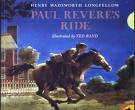
Longfellow, H. W. (1996). Paul Revere’s ride. (Illus. by Ted Rand).
Henry Wadsworth Longfellow’s poem, written in 1775, made patriot Paul Revere into a legend by neglecting to include
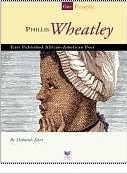
Phillis Wheatley is taken from

Fritz, J. (1974). Why don’t you get a horse, Sam Adams?
Biography.
This is the story of events leading up to the Revolutionary War, told through the life of Sam Adams, leader of the Sons of

Fradin, D.B. (2003). Who was Thomas Jefferson? (Illus. by John O’Brien).

Denenberg, B. (1988). The journal of William Thomas Emerson.
Scholastic. Grades 4-8. Historical fiction.

Abraham, P. (1970). Benjamin Franklin.
Thursday, July 3, 2008
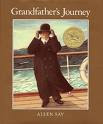 Say, A. (1993). Grandfather's journey. New York: Houghton Mifflin. Illustrated by Allen Say. Picture book. Contemporary realistic fiction.
Say, A. (1993). Grandfather's journey. New York: Houghton Mifflin. Illustrated by Allen Say. Picture book. Contemporary realistic fiction.Realistic fiction. Ages 4-8. The reader shares in the travels of a young man replicating his family history. Torn between two lands, Japan and America, both grandfather and grandson share a longing for home, but are confused about its meaning. Beautiful illustrations make the reader feel part of the journey.
1994 Caldecott Award
 Taylor, M. (2002). Roll of thunder, hear my cry. New York: Penguin Books. Realistic fiction. Ages 8-12.
Taylor, M. (2002). Roll of thunder, hear my cry. New York: Penguin Books. Realistic fiction. Ages 8-12.Set in the depression era, this is a story about a black family and the discrimination they face in rural Mississippi. A book that gives students and opportunity to discuss prejudice, courage, and self-pride.
1977 Newbery Award
 Lowery, L. (2002). The giver. New York: Random House. Science fiction. Grades 6-9.
Lowery, L. (2002). The giver. New York: Random House. Science fiction. Grades 6-9.At the age of 12, Jonas is given his life's job as the Receiver; the holder of eternal memories. He discovers that his society is not as perfect as it seems, and must summon his courage in a fight for survival. This is a book that is sure to elicit grand discussions.
1999 Newbery Award
 Cleary, B. (2000). Dear Mr. Henshaw. New York: HarperCollins. Illustrated by Paul Zelinsky. Realistic fiction. Ages 8-12.
Cleary, B. (2000). Dear Mr. Henshaw. New York: HarperCollins. Illustrated by Paul Zelinsky. Realistic fiction. Ages 8-12.Letters to a favorite author and diary entries tell the story of a boy facing many changes in his life due to divorce. Students will connect with Leigh Botts as he battles the stigma as he new boy in class feeling alone and confused.
1984 Newbery Award
 Rockwell, A. (2002). Only passing through: The story of Sojourner Truth. New York: Dragonfly Books. Illustrated by Anne Rockwell. Picture book/biography. Grades 3-6. This book tells the story of Sojourner Truth as she transforms from an enslaved young girl to an emancipated women speaking out against slavery. Be sure to do a picture walk first!
Rockwell, A. (2002). Only passing through: The story of Sojourner Truth. New York: Dragonfly Books. Illustrated by Anne Rockwell. Picture book/biography. Grades 3-6. This book tells the story of Sojourner Truth as she transforms from an enslaved young girl to an emancipated women speaking out against slavery. Be sure to do a picture walk first!2001 Coretta Scott King Honor Award - illustrations
 Shange, N. (2004). Ellington was not a street. New York: Simon and Schuster. Illustrated by Kadir A. Nelson. Poetry. Grades 3-5. Historical fiction.
Shange, N. (2004). Ellington was not a street. New York: Simon and Schuster. Illustrated by Kadir A. Nelson. Poetry. Grades 3-5. Historical fiction.Based on author’s family friendships with W. E. B. Dubois, Paul Robeson, Dizzy Gillespie, and Duke Ellington- “men who changed the world”. Good choice for literature circles.
2005 Coretta Scott King Honor Award
Wednesday, July 2, 2008
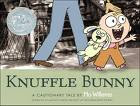 Willems, M. (2004). Knuffle bunny.
Willems, M. (2004). Knuffle bunny. 2005 Caldecott Honor Book
2007 Carnegie Medal/Children’s Video.
 Ryan, P. (2002). Esperanza rising.
Ryan, P. (2002). Esperanza rising. After the death of her father, Esperanza and her family are forced to flee their upper class life on a ranch in
2002 Pura Belpre Award
 Bredsdorff, B. (2004). The crow-girl.
Bredsdorff, B. (2004). The crow-girl. Simply told story about a girl from
2005 Batchelder Honor Award
Please read comment


